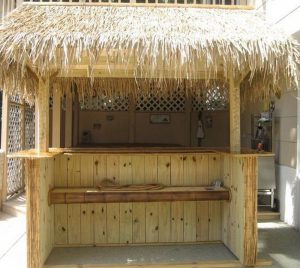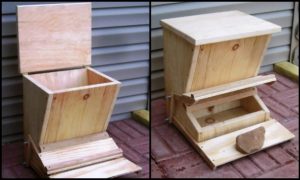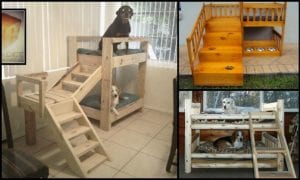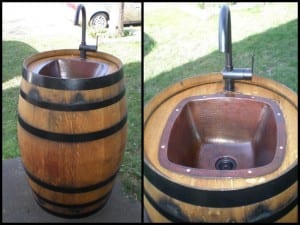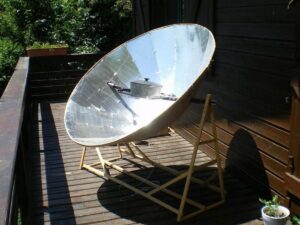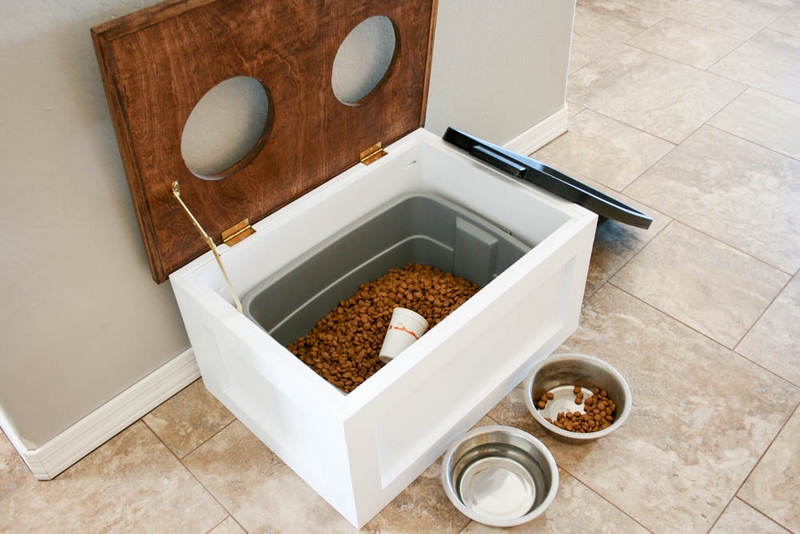
One of the challenges of keeping a pet is the mess they often create. We love our dogs, but every pet owner knows that having a dog running around the house can mean endless clean-up duty! Dogs are particularly prone to making messes, as they are often excited and playful.
This can result in them spilling their food or water, tracking in mud and dirt, and more. While it is important to keep our homes clean for our own sake, it is also important to keep them clean for our pets. A clean home is a healthy home, and it is much easier to spot potential health problems in a clean environment. For these reasons, it is important to make sure that we are regularly cleaning up after our furry babies.
If your dog loves to tip over his or her bowl, making a mess with food or water, you may be able to solve the problem with this project. By raising the bowl off the ground, you can make it more difficult for your dog to tip it over. Try using a raised platform or bowl holder to see if it makes a difference.
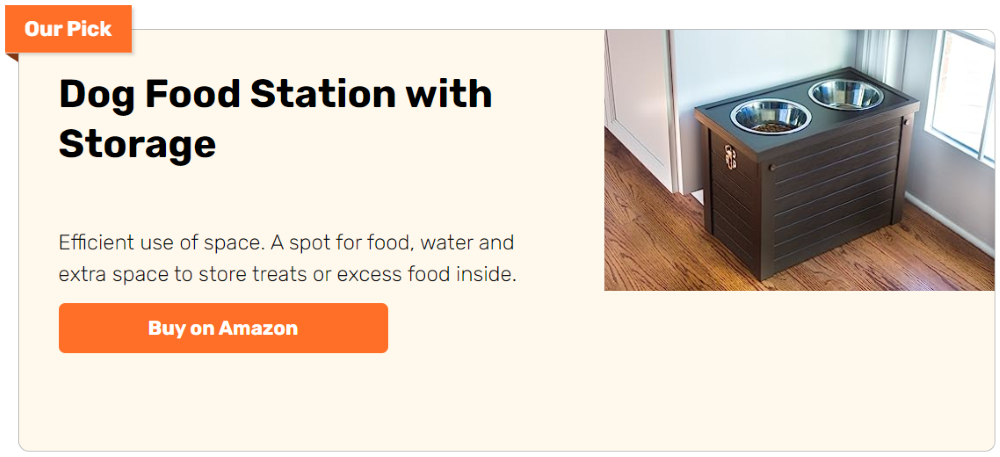
If you’re looking for a way to make mealtimes easier for your dog – and for yourself – then a dog food station with storage is a great option. By keeping both water and food bowls at a suitable height, your dog can eat without making a mess, and you can avoid having to bend down to their level. This also helps to keep their food and water clean, as they are less likely to knock over their bowls when they are at a comfortable height.
Plus, with this dog food station with built-in storage, you can keep all your dog’s food in one place, making it easy to grab when it’s time to fill up their bowl. This food station is perfect for keeping your dog’s food supply out of sight and organized. The storage compartment is perfect for keeping bags of food or extra kibble.
This featured dog food station is the perfect solution for big dogs. It can accommodate a 10-gallon tote box, making it ideal for larger breeds. And if you’ve got a smaller or medium-sized dog, then simply adjust the measurements. This dog food station is a must-have for any pet owner.
In some cases, you might need to redesign your own dog food station to better accommodate your pet’s needs. This is especially true for owners of smaller dogs, who might need a station that is lower to the ground and easier for their pet to reach. 😉

Need some inspiration for your dog food station? Then see more examples by viewing our album below!
You’ll need these materials:
- 3/4″ Plywood
- 1×3 Pine Timber (trimming)
- 3/4″ Square Dowel Trim
- Wood Glue
- Wood Filler
- 1 1/4″ Brad Nails
- White Paint
- Wood Stain
- Narrow Utility Hinges
- Lid Support Hinges
- 10-gallon Tote Box
And these tools:
- Brad Nailer
- Jigsaw
- Sander
- Mortise Chisel
Click on any image to start the lightbox display. Use your Esc key to close the lightbox.![]()
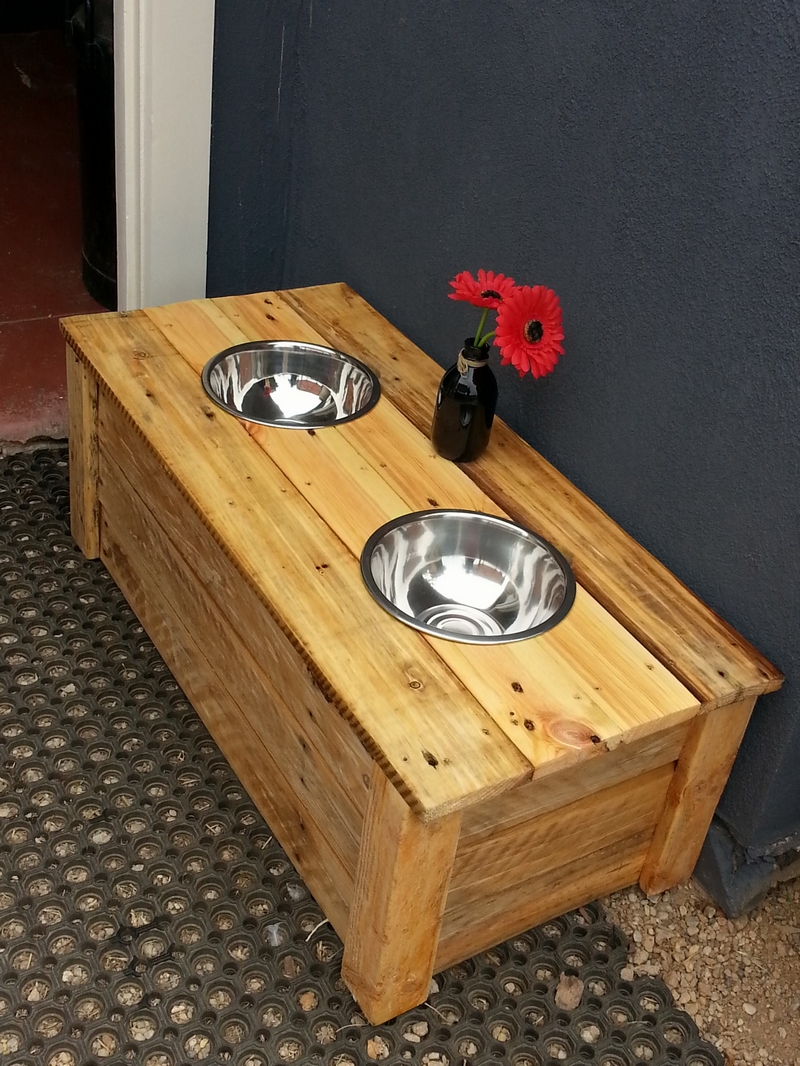
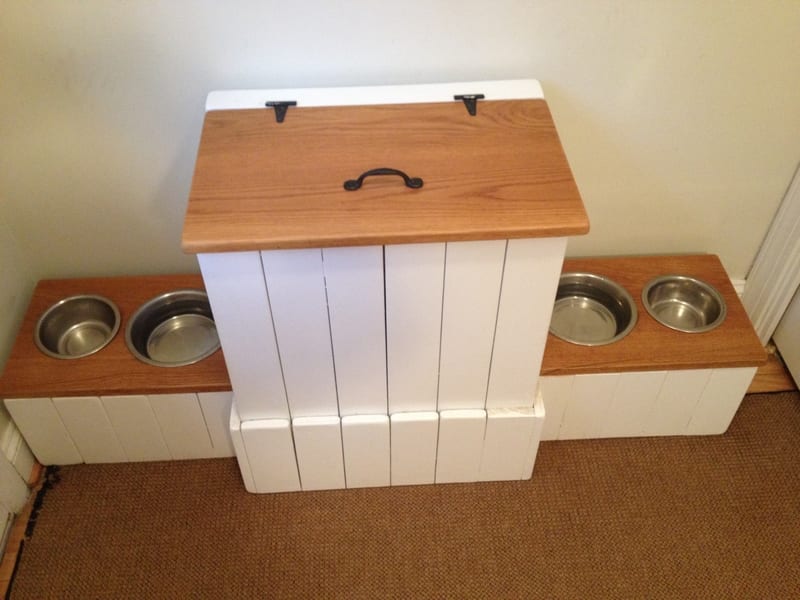
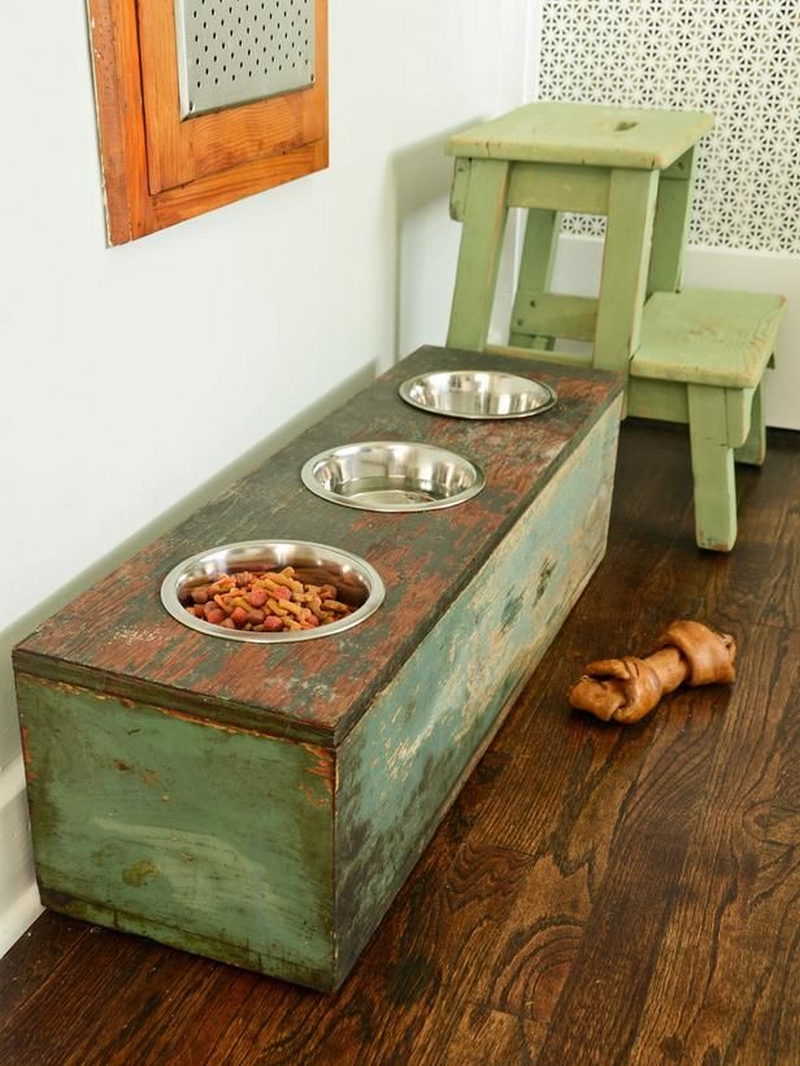
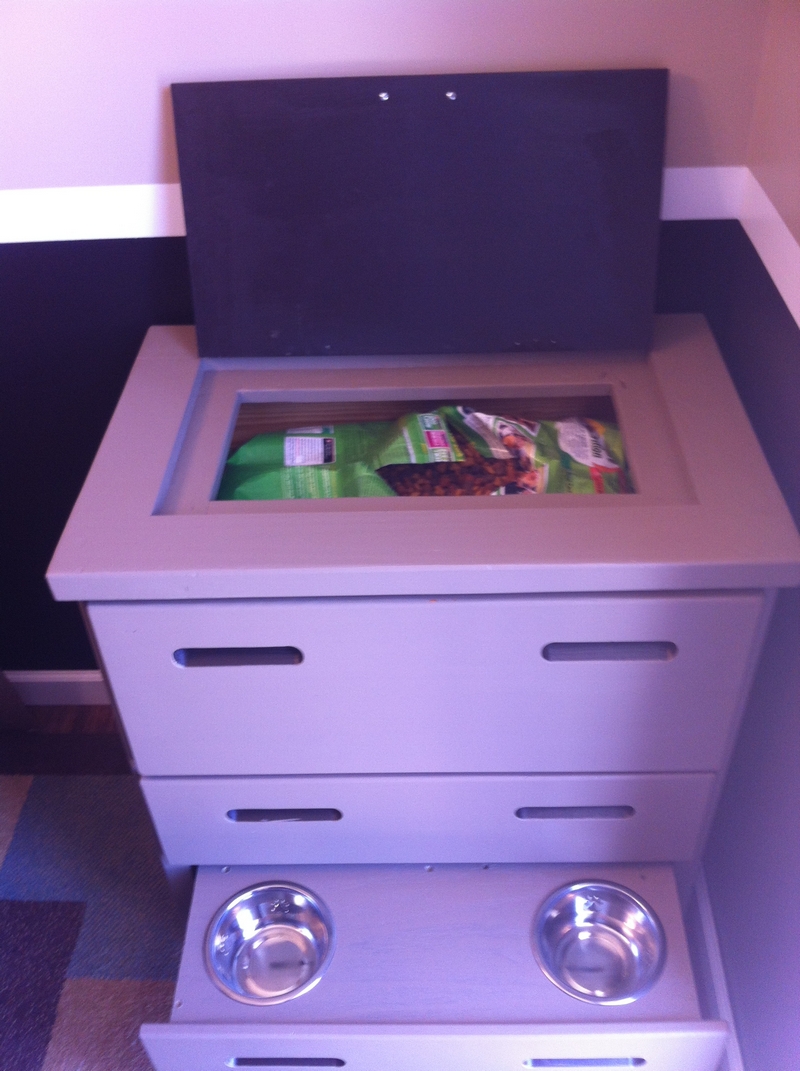

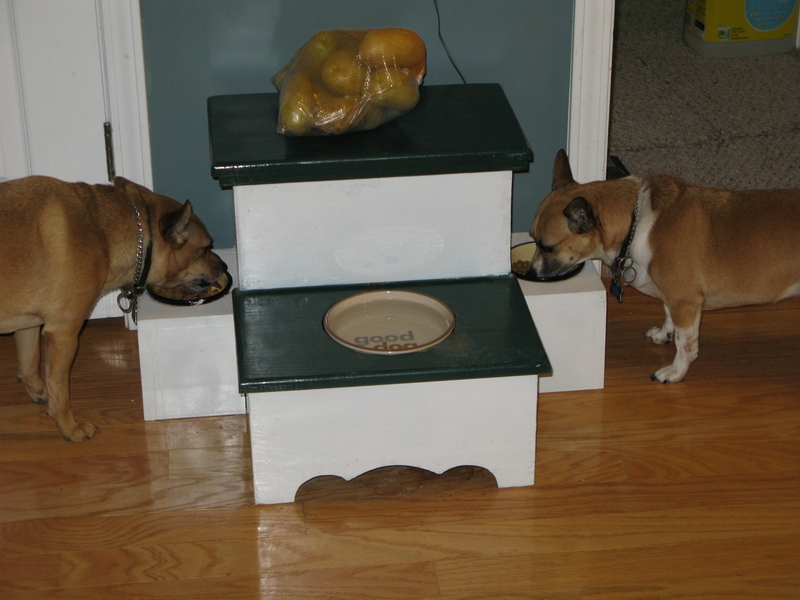

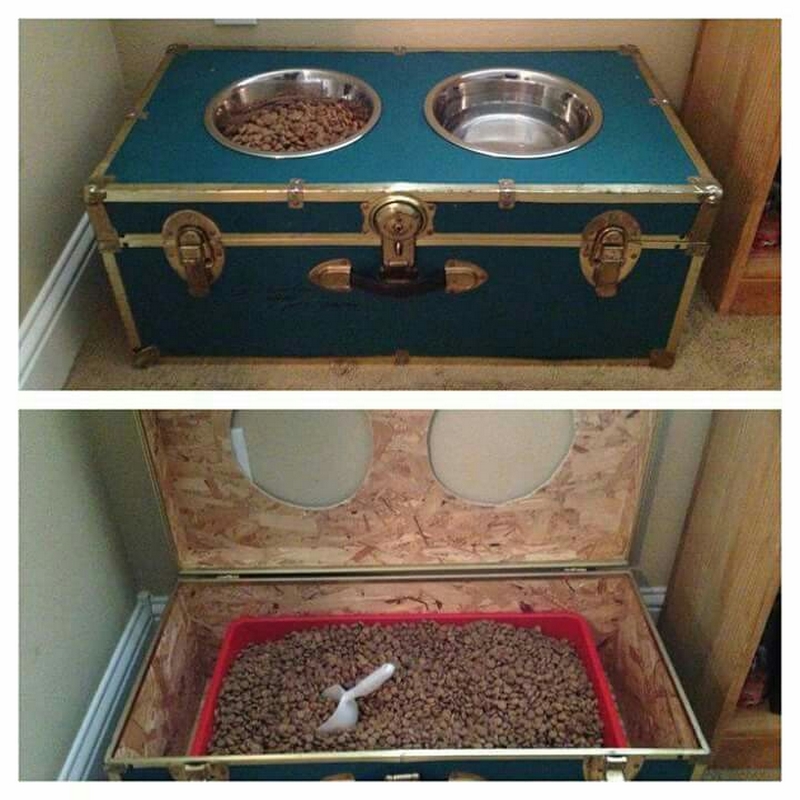

If you’re interested in building your own dog food station with storage, then all you have to do is to gather all the materials we’ve listed below. With just a few inexpensive materials and some basic tools, you can easily create a space-saving storage solution for your furry friend’s food. Plus, this do-it-yourself project is a great way to add some extra storage to your home. Then, you can get step-by-step instructions from Addicted 2 DIY over here…
Is this going to be your next project for your fur babies? Don’t forget to share with us the finished product! 😉

